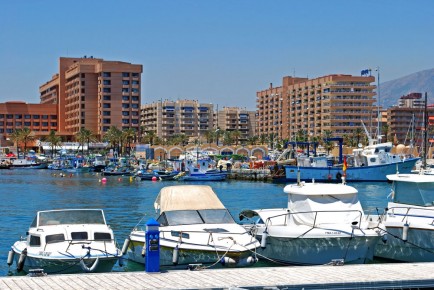
On the rise: Property prices in Spain are set to edge upwards from 2016
Credit ratings agency Standard & Poors released a report last week that predicts house prices in Spain will rise by two per cent in 2016, after reaching the bottom of the market next year.
Since the economic crisis brought Spain’s real estate sector tumbling in 2008, property prices have fallen by an average of 30 per cent across the country. On the Costa del Sol, many experts agree that prices bottomed out towards the end of 2012 and into 2013, and have steadily begun to rise in some of the more popular resorts such as Marbella and Nueva Andalucía…However, for much of the rest of Spain, the property market still has some way to go before prices begin to recover, claim the ratings agency, which predicts that average house prices will fall a further two per cent this year. In 2013, average property prices in Spain dropped 4.6 per cent, indicating that the situation has already begun to improve. In 2015, prices will be unlikely to fall any further, and should begin to rise before the end of next year.
The Standard & Poors report outlined a “faster than expected” recovery in the Spanish economy, predicated on surging imports, rapid investment in the real estate sector, and job growth.
“We have seen a change in trends in the Spanish property market in the last 12 months with the arrival of British and US property funds,” Eduardo Molet, a real estate expert based in Madrid, told English-language newspaper The Local.
“British funds in particular are taking advantage of the offers in the Spanish property market, and they are here to stay,” added the analyst, who also explained that the pace of recovery will differ across the country, with more popular regions that boast a wider selection of good quality stock performing better than those without. “Real estate near the coast and in the bigger cities will rebound much faster than elsewhere,” he said.
Longer-term, Standard & Poors forecast that the initial recovery will slow if renewed confidence triggers more construction, citing the high number of properties on the market as finely balanced, with any large quantities of new builds potentially swatting the recovery into reverse.
Continued demographic changes, such as Spain’s brain drain that has seen nearly 100,000 young professionals leave the country in the past 18 months, could also have a negative effect on the market’s recovery because first-time buyers – usually drawn from the generation aged 25-40 – are necessary in bringing much-needed dynamism, cash and momentum to the property ladder.
 en
en



 Vlaams-Nederlands
Vlaams-Nederlands
0 Comments
Leave a Comment
DISCLAIMER
The opinions and comments expressed by contributors to this Blog are theirs alone and do not necessarily reflect the views of VIVA Homes Under the Sun Ltd, any of its associated companies, or employees; nor is VIVA to be held responsible or accountable for the accuracy of any of the information supplied.
Have you got something to say?